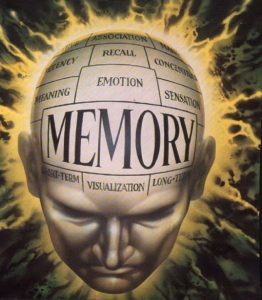
The advantage that memory gives us is the ability to predict the future. When confronted with a situation we can explore what we already know and act accordingly. If we do not know the specific situation we are presented with then we can make an approximation based on similar situations. Fernyhough (2012) seeks to overturn the ‘common sense’ view of memory as being, as he calls it, a DVD of our experience or specific snapshots of time, with a view that our autobiographical memories are reconstructed every time we remember them from a combination of semantic memory (memory of facts) and episodic memory (memory of events).
Each time we remember it is a reconstruction with the potential for flaws and embellishments. These memories then become our real lived experience of the ‘remembered’ event. This means that by supporting people to combine various strands of knowledge, memory finding may be supported. One significant aspect of remembering is emotion. We are more likely to remember the emotion of the event than the detail. This also has resonance from my own practice experience when discussing the events of the day at a day centre with a man with dementia. I found he could not recount what he had done but could remember the emotions he had felt. He was able to state that he had had a generally good day but something had upset him on the way home. It turned out that there had been an incident with the day centre transport, not involving him, that had been quite alarming. He remembered how he felt but not the events.
One important aspect in the reconstructing of memory, and therefore remembering, is environment. If people with dementia are reconstructing their memories it is important for them to have cues around them like photographs, the ornaments on their fireplace, or the view of their garden. Under such circumstances their capacity to remember may improve. They will ‘remember’ through exploration of their environment. We’ve all done this: you walk from one room to another and can’t remember what you were about to do so you return to the room where you had the thought and find you can remember by looking around for cues.
A practice example would be when people with dementia are in hospital their presentation becomes more confused and more disorientated but then when they return home these ‘symptoms’ improve. This has proved the case many times in my experience and I would argue you cannot adequately assess someone’s ability to be at home without them being at home. The value of a home visit while still an in-patient, or while in a reablement centre, is substantial in gaining a true picture of strengths and levels of independence. Convincing families and family carers of this can be understandably difficult, but anecdotal evidence shows the possibility of a successful return home under these circumstances to be significant.
In working with people with dementia there are also some opportunities we can utilise to help people remember. Fernyhough (2012) observes that remembering is a social process. It happens with other people and is often contextual. What you can remember may rely on cues, but also some of those cues can be the people you are remembering with. So, in the earlier example of the man attending the day centre if I were reviewing his attendance there I might want to do that at the day centre with staff, and possibly even other service users that he relates to, obviously considering the appropriateness of that in terms of service user choice and confidentiality, to help ‘scaffold’ his memories.
De Vries (2013) reports Normann et al (2006) found that when supporting people with dementia, close contact with family and caregivers improved lucidity. Even when not at the day centre, priming memory with facts, for example, “the place you go on the bus”, “where you see George”, may aid remembering.
So in undertaking interventions or assessment work with people with dementia we need to consider where we undertake the work we do, who we have present, and how we can assist the person with remembering in order to make sure they are fully represented in the interaction and more importantly that they are shaping the outcomes of our involvement themselves.
Fernyhough, C. (2012) Pieces of Light: The new science of memory. Profile Books:London
de Vries K (2013) Communicating with older people with dementia. Nursing Older People. 25, 4, 30-37. RCN Publishing Company
[Stephen Mordue]

